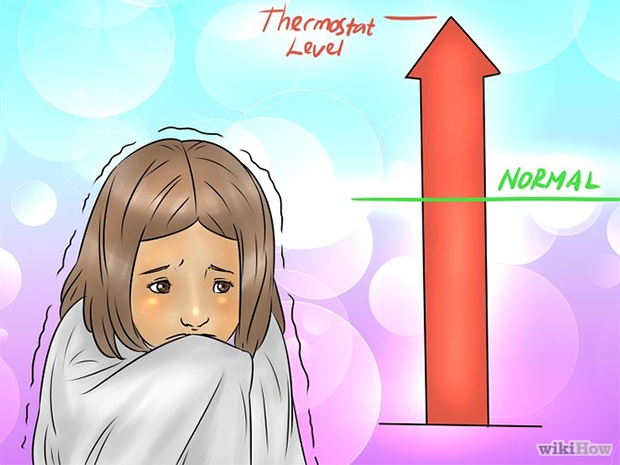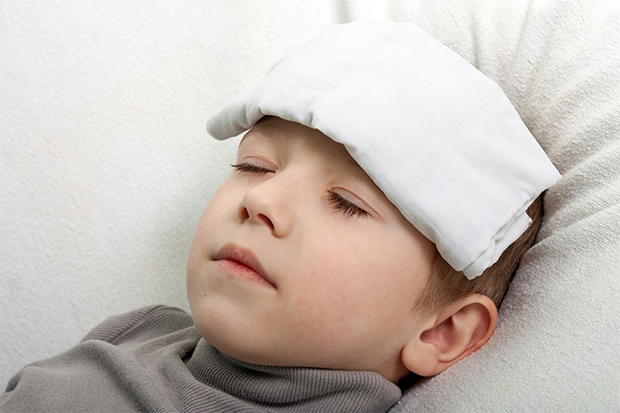|
A fever -- also known as a high fever or a high
temperature -- is not by itself an illness. It's usually a symptom of an
underlying condition, most often an infection.
Fever is usually associated with physical discomfort, and most people
feel better when a fever is treated. But depending on your age, physical
condition, and the underlying cause of your fever, you may or may not
require medical treatment for the fever alone. Many experts believe that
fever is a natural bodily defense against infection. There are also many
non-infectious causes of fever.
|
|
 |
|
Fever is generally not considered dangerous, but hyperthermia can cause
dangerous rises in body temperature. This can be due to an extreme
temperature associated with heat injury such as heat stroke, side
effects of certain medications or illicit drugs, and stroke. With
hyperthermia, the body is no longer able to control body temperature.
In children with fever, accompanying symptoms such as lethargy,
fussiness, poor appetite, sore throat, cough, ear pain, vomiting, and
diarrhea are important to relay to your doctor.
According to the American Academy of Pediatrics, if you have an infant
younger than 4 months old with a rectal temperature of 100.4 F or above,
you should immediately call your doctor or go to an emergency room,
because it could be a sign of a potentially life-threatening infection.
Also call your doctor or go to the emergency room if any child has a
fever above 104 F. High fever can cause seizures in young children.
Call your doctor right away if your child has a
fever and:
Looks very sick
Is drowsy or very fussy
Has a weakened immune system or other medical problems
Has a seizure
Has other symptoms such as rash, sore throat, headache, stiff neck, or
earache
Call the doctor if the fever lasts more than 1 day in a child less than
2 years old or lasts more than 3 days in a child age 2 or older.
|
|

|
|
Causes of Fever
A part of the brain called the hypothalamus controls body temperature,
which usually varies throughout the day from the normal temperature of
98.6 F.
In response to an infection, illness, or some other cause, the
hypothalamus may reset the body to a higher temperature.
Although the most common causes of fever are common infections such as
colds and gastroenteritis, other causes include:
Infections of the ear, lung, skin, throat, bladder, or kidney
Conditions that cause inflammation
Side effects of drugs
Cancer
Vaccines
Other causes of fever include:
Blood clots
Autoimmune diseases such as lupus, rheumatoid arthritis, and
inflammatory bowel disease
Hormone disorders such as hyperthyroidism
Illegal drugs such as amphetamines and cocaine
Diagnosis of Fever
Although a fever is easy to measure, determining its cause can be hard.
Besides a physical exam, your doctor will ask about symptoms and
conditions, medications, and if you've recently traveled to areas with
infections or have other infection risks. A malaria infection, for
example, may be have a fever that typically recurs. Some areas of the
U.S. are hotspots for infections such as Lyme disease and Rocky Mountain
spotted fever.
|
|

|
|
Sometimes, you may have a "fever of unknown origin." In such cases, the
cause could be an unusual or not obvious condition such as a chronic
infection, a connective tissue disorder, cancer, or another problem.
Treatments for Fever
Treatments vary depending on the cause of the fever. For example,
antibiotics would be used for a bacterial infection such as strep
throat.
The most common treatments for fever include over-the-counter drugs such
as acetaminophen (Tylenol) and nonsteroidal anti-inflammatory drugs such
ibuprofen (Advil, Motrin) and naproxen (Aleve). Children and teens
should not take aspirin because it's linked to condition called Reye’s
syndrome.
|